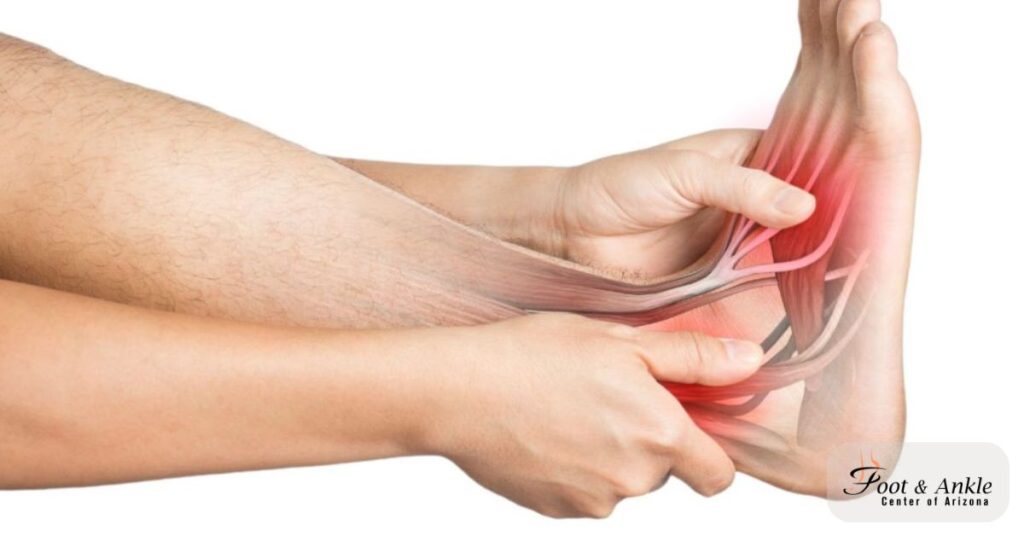Foot pain is a common issue that most people experience at some point in their lives. Whether it’s due to excessive walking, intense workouts, or prolonged standing, the feet are prone to soreness. However, some types of foot pain, especially on the top of the foot, should not be ignored, as they could signal more serious conditions. Consulting a podiatrist or a foot and ankle specialist in Scottsdale is crucial for understanding the root cause and determining the severity of your pain. Below are some common causes of pain on the top of the foot and how to address them.
1. Stress Fracture
A stress fracture is a small crack in the bone that often occurs when someone transitions from inactivity to high-impact activities, such as running or jumping. Over time, untreated stress fractures can worsen. Common symptoms include:
- Sharp pain on the top of the foot.
- Swelling and tenderness in the affected area.
Initially, stress fractures may not appear on an X-ray, making early detection challenging. The pain often becomes more noticeable as the condition progresses.
Treatment:
- Limit physical activity immediately.
- Use a protective boot to immobilize the foot.
- Follow up with your doctor after a few weeks to confirm the diagnosis and develop a treatment plan.
2. Heel Pain
Heel pain can sometimes radiate to the top of the foot and is often caused by plantar fasciitis, an inflammation of the plantar fascia ligament. This condition typically results from untreated injuries or repetitive overuse. Symptoms include:
- Pain in the sole of the foot.
- A stabbing sensation, particularly when taking the first steps in the morning.
Triggers for plantar fasciitis include starting high-impact activities after prolonged rest or standing for extended periods.
Treatment:
- Incorporate stretching exercises into your routine to improve flexibility.
- Use supportive footwear with proper arch support.
- Avoid excessive weight gain, which can place additional strain on the feet.
3. Morton’s Neuroma
Morton’s neuroma occurs when the tissue surrounding a nerve in the foot becomes swollen, typically between the third and fourth toes. This condition often presents as:
- Pain in the ball of the foot.
- A sensation similar to stepping on a marble.
Diagnosis is confirmed through an MRI, and the severity of the swelling indicates the progression of the condition.
Treatment:
- Use shoe inserts or special padding to reduce pressure on the affected area.
- Stretch regularly and wear properly fitted shoes, especially during physical activities.
- In severe cases, surgical intervention may be necessary to remove the affected nerve tissue.
Take Action for Persistent Foot Pain
If you’re experiencing pain on the top of your foot or any other discomfort that doesn’t improve with rest, it’s time to seek professional help. A podiatrist or foot and ankle doctor in Scottsdale can provide a thorough evaluation and recommend a tailored treatment plan. Early intervention can prevent minor issues from developing into more significant problems, ensuring your feet remain healthy and pain-free.





